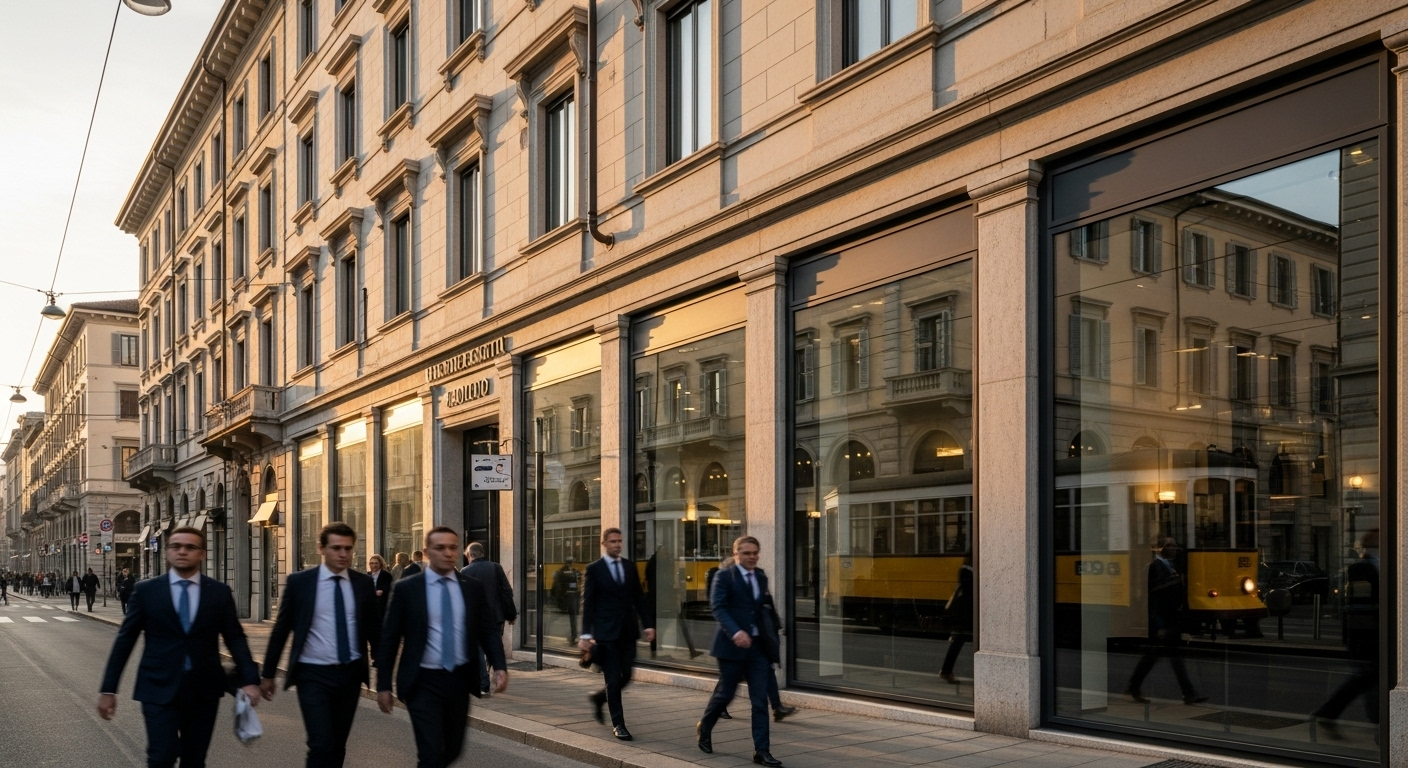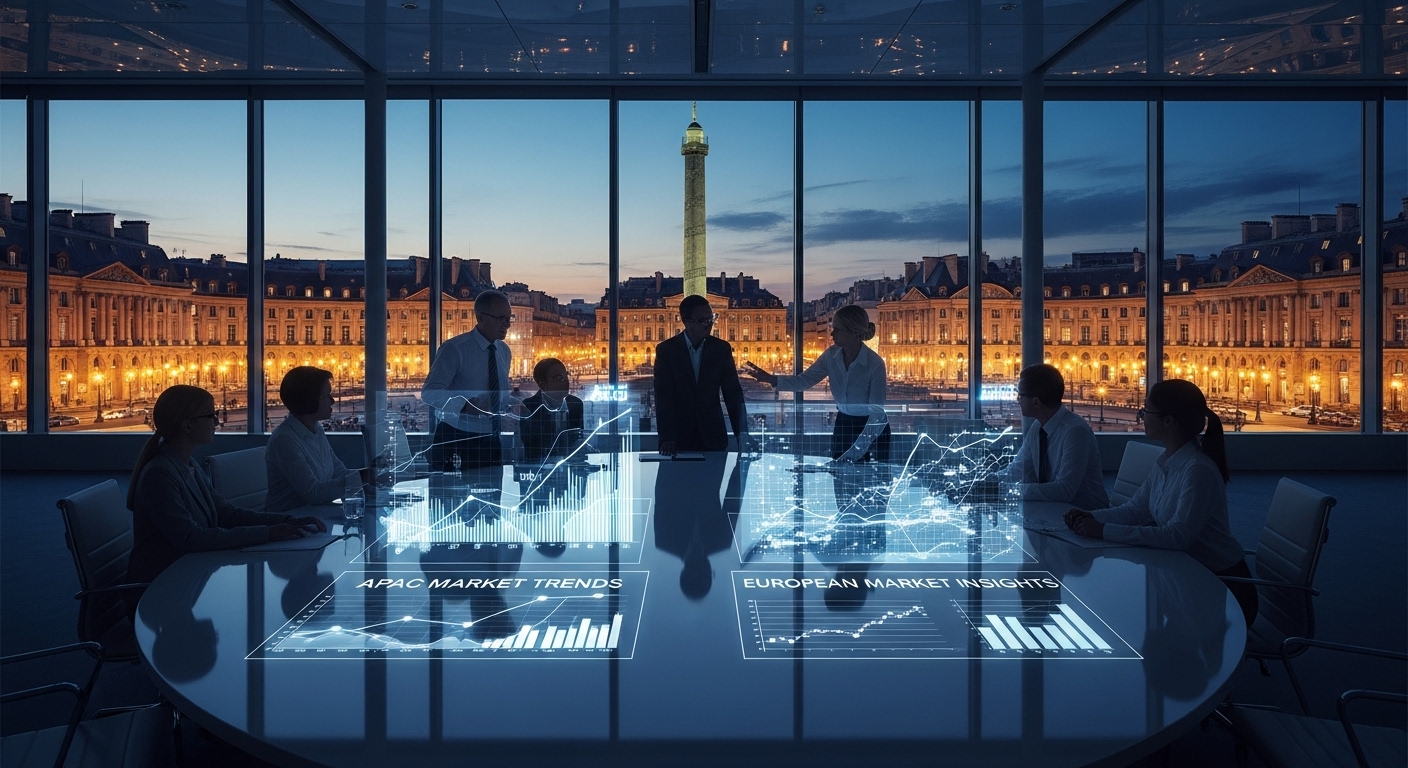Milan, a city synonymous with high fashion, finance, and design, stands as Italy’s undisputed economic engine. Its modern skyscrapers in districts like Porta Nuova often dominate the narrative of its business prowess. However, a deeper look reveals that the true strategic advantage for global enterprises lies within its historic core. This area, a rich tapestry of centuries-old architecture and contemporary commerce, offers a unique blend of prestige, connectivity, and innovation that modern developments cannot replicate. As companies seek to establish a foothold in Europe, understanding the dynamics of these central districts is paramount. Milan’s ability to seamlessly integrate its storied past with a forward-looking economic strategy is what makes it a top-tier global market. This post will explore the multifaceted appeal of Milan’s city center, examining its economic resilience, the convergence of key industries, and the strategic importance of establishing a presence in a location that is both historically significant and perfectly positioned for the future of global business.
Milan’s enduring economic powerhouse status
Milan’s reputation as a global economic hub is built on a foundation of remarkable resilience and sustained growth. As the capital of the Lombardy region, the city and its surrounding area generate approximately 23% of Italy’s national GDP. In recent years, while other parts of the country and Europe faced economic uncertainty, Milan has consistently demonstrated a robust capacity to expand, with its economy growing at a significantly faster rate than the national average.This economic vitality is fueled by a diverse industrial landscape, where finance, fashion, media, and technology converge to create a dynamic and innovative ecosystem. The city is home to the Borsa Italiana, Italy’s main stock exchange, and hosts the headquarters of numerous multinational corporations and major Italian brands, from Versace and Prada to UniCredit bank. This concentration of corporate power makes it a critical node in the European and global economy. Furthermore, Milan has proven to be a magnet for foreign direct investment (FDI), attracting over 60% of all foreign investments made in Italy.This influx of international capital is a testament to the city’s stable yet pro-business environment, its skilled workforce, and its strategic location at the heart of Europe.
The strategic fusion of history and modernity in Milan’s core
While new business districts like Porta Nuova showcase Milan’s modernity, the city’s historic center, particularly the area around the Duomo and Via Broletto, is undergoing a sophisticated transformation. This district is not a static museum piece but a vibrant, evolving commercial landscape where heritage buildings are being repurposed into high-specification office spaces. This fusion of classic architecture with modern functionality provides businesses with an unparalleled sense of prestige and permanence. The redevelopment within these central zones focuses on preserving the historic character of the facades while completely overhauling the interiors to meet the demands of contemporary global companies, including advanced technological infrastructure and sustainable building certifications like LEED Platinum. A prime example of this evolution can be found at via broletto 46 20121 milano mi, italy, a location that embodies the strategic advantage of being in a central, well-connected area rich with history yet equipped for modern enterprise. This trend allows companies to operate from a landmark address, benefiting from the area’s established reputation while enjoying the amenities of a brand-new development. It’s this unique value proposition that makes the historic core a compelling alternative to the city’s newer business hubs.
A convergence of world-leading industries
Milan’s economic strength lies in its diversification. It is not reliant on a single sector but thrives on the synergy between several world-leading industries. The city is globally recognized as one of the ‘big four’ fashion capitals, hosting major fashion weeks and the headquarters of iconic luxury brands. The fashion industry alone in the Milan metropolitan area generates a significant portion of Italy’s turnover for the sector. Alongside fashion, Milan is a powerhouse in finance and banking, home to over 170 banks (nearly 50 of which are non-Italian) and thousands of financial service companies. In recent decades, the city has also become a burgeoning hub for technology and digital media. It hosts a significant number of Italy’s innovative startups, particularly in fintech and ICT, attracting substantial venture capital funding. This creative and commercial melting pot fosters a unique environment of innovation and collaboration. For a business operating in Milan, this means access to a diverse supply chain, a wide pool of specialized talent, and countless opportunities for cross-sector partnerships, all within a compact and accessible urban center.
Unmatched connectivity at the heart of Europe
A key factor in Milan’s appeal as a global business destination is its exceptional infrastructure and connectivity. The city’s central business district is supported by a highly efficient public transportation network, including an extensive metro system, trams, and buses, making it easily navigable for employees and clients alike. This internal accessibility is matched by its superb external connections. The Milan region is served by three major international airports—Malpensa, Linate, and Orio al Serio—which handle over 35 million passengers annually and position Malpensa as one of Europe’s largest air cargo hubs. This extensive air network provides direct links to major cities across Europe, Asia, and the Americas. Furthermore, Milan is a central node in Europe’s high-speed rail network, offering fast and convenient travel to other major Italian and European cities. For companies looking to manage operations across the continent, this level of connectivity is a critical logistical advantage, reducing travel time and facilitating the smooth flow of goods, services, and personnel. Establishing a base in central Milan places a business at the epicenter of these transportation networks, ensuring seamless access to both domestic and international markets.
Fostering talent through education and innovation
A city’s long-term economic success is intrinsically linked to its ability to cultivate and attract top talent. Milan excels in this regard, boasting a number of prestigious universities, including Bocconi University, the University of Milan, and the Polytechnic University of Milan. These institutions are renowned for producing a highly skilled and educated workforce, particularly in the fields of economics, engineering, design, and technology. This steady pipeline of talent is a crucial asset for companies headquartered in the city. Beyond formal education, Milan fosters a culture of innovation. The city is home to numerous incubators, accelerators, and research centers designed to support startups and innovative enterprises. Initiatives like the Milan Innovation District (MIND) are creating new ecosystems where academia, research, and business can collaborate on cutting-edge projects. For a global company, a location such as via broletto 46 20121 milano mi, italy offers proximity not only to commercial hubs but also to this vibrant network of knowledge and innovation, providing access to the ideas and people that will shape the future of industry.
The rise of sustainable and high-performance workspaces
In today’s corporate world, there is a growing demand for workspaces that are not only functional but also sustainable and conducive to employee well-being. Milan’s real estate market has responded to this trend with a focus on green building practices and high-performance renovations. Many of the redevelopment projects in the city’s historic center are achieving top-tier environmental certifications, such as LEED and BREEAM. These certifications signify a commitment to reduced carbon emissions, energy efficiency through technologies like geothermal and photovoltaic systems, and the use of sustainable materials. This focus on ESG (Environmental, Social, and Governance) standards is becoming a critical factor for multinational corporations when selecting office space, as it aligns with their own corporate responsibility goals. Furthermore, these modern, refurbished buildings offer enhanced amenities, such as improved air quality, natural light, and flexible floor plans, which contribute to a more productive and healthier work environment. The availability of such high-quality, sustainable office space within historically significant buildings is another key differentiator that sets Milan’s central business district apart from other European commercial hubs.
Navigating the prime commercial real estate market
Investing in commercial real estate in Milan’s city center represents a strategic decision backed by a stable and growing market. The demand for both commercial and high-end residential properties has been on a consistent upward trend, driven by the city’s economic expansion and its increasing appeal to international businesses and talent. The central business district, in particular, is considered a ‘super core’ market, characterized by high-quality assets, strong tenant covenants, and sustained rental income. The combination of limited supply within the historic core and continuous demand ensures that properties in this area retain their value and represent a secure long-term investment. For businesses looking to establish a physical presence, locations like via broletto 46 20121 milano mi, italy offer more than just an office; they offer a stake in one of Europe’s most resilient and prestigious real estate markets. The city is projected to continue attracting billions in real estate investment, outperforming many other major European cities and solidifying its status as a top-tier destination for corporate occupiers.
In conclusion, Milan offers a compelling proposition for global businesses seeking a strategic European base. While its modern skyline is a testament to its forward momentum, the city’s true competitive edge is found in the sophisticated blend of history, commerce, and innovation within its historic heart. The ability to operate from a prestigious, centrally located address that is fully equipped with modern, sustainable technology provides a unique advantage. Milan’s resilient and diversified economy, coupled with its world-class connectivity and deep talent pool, creates an ecosystem ripe for growth and success. The ongoing, intelligent redevelopment of its historic buildings ensures that the city not only preserves its rich heritage but also meets the evolving demands of 21st-century business. For companies aiming to make a mark on the global stage, establishing a presence in Milan’s central business district is not just a tactical move; it’s a strategic investment in a future defined by prestige, performance, and unparalleled opportunity.





